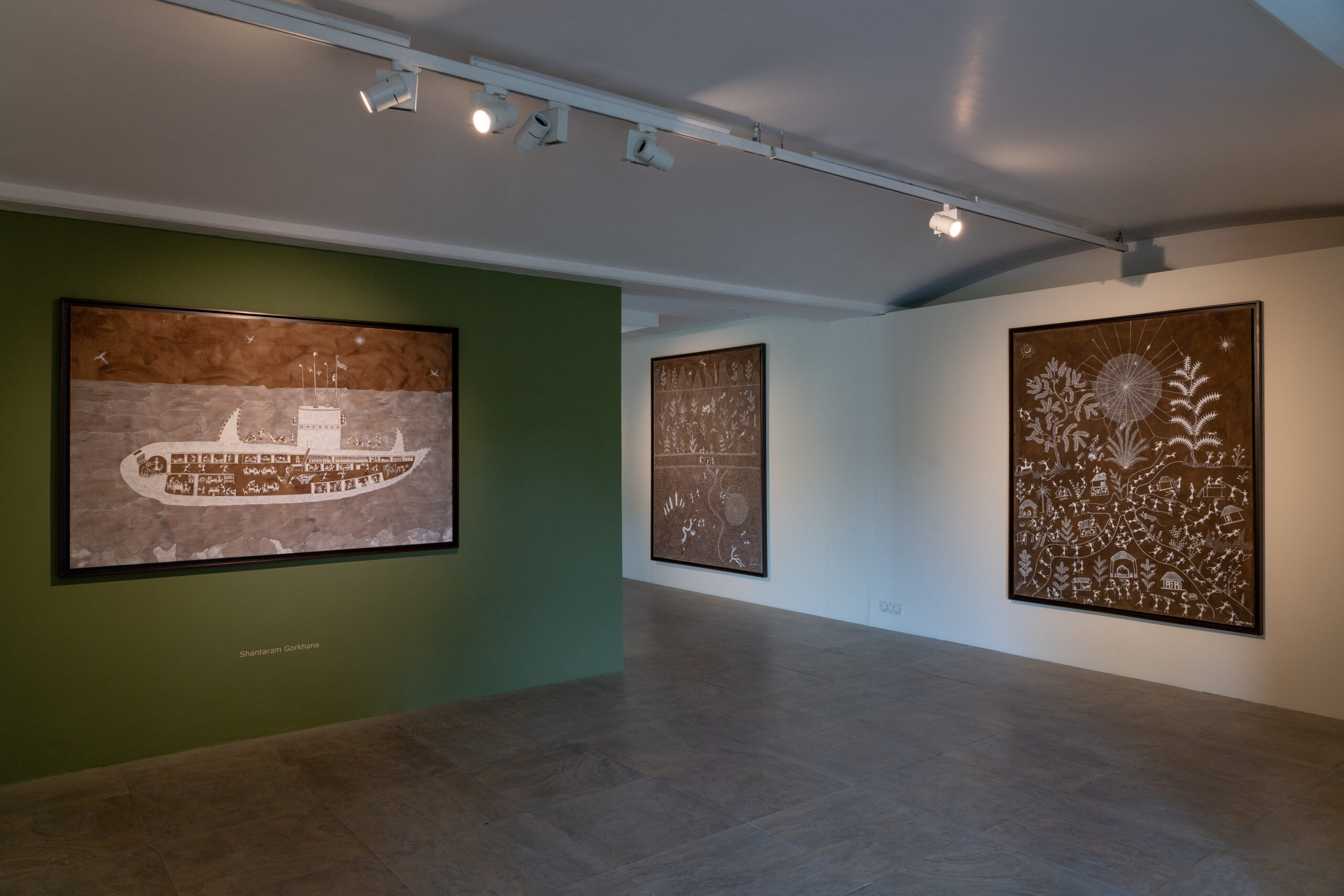On display in the exhibition will be about 20 artworks that have been specially commissioned for this exhibition and are mostly in a large format, measuring up to 5 feet by 8 feet.
In this exhibition you will be able to see works of Balu J Mashe, Mayur and Tushar Vayeda, Rajesh Chaitya Vangad, Ramesh Hengadi, Sadashiv J Mashe, and Shantaram Gorkhana.
‘In 2019, we hosted our first major Warli Art exhibition, and learnt a lot over the next few years. Among the indigenous arts, on first look Warli seems plodding with essentially a brown base and white imagery. It takes a little bit of time to understand and appreciate Warli and it emerges as the most simplistic, to-the-point, and lightest art form.
In the 1970s Jivya Soma Mashe started painting on paper and cloth, enabling the travel of the art form, from walls to the world. Today, it is one of the most recognized art forms coming out of India and is celebrated for its simplicity and poignancy.’ – Anubhav Nath, Ojas Art
The Warli tribals or indigenous people speak of ancient times and evoke their ancestral cultures, dating back to 2500 BC, through their ritualistic paintings made as murals on walls. Mainly created by women to mark and observe weddings, ceremonies and joyous occasions, these murals were made using soil, cow dung and rice paste.
Only in the 1970’s this art form was transferred from walls to canvases, which also helped in taking the art form to the world. Jivya Soma Mashe (1934-2018) popularized this art form and is considered as the Father of Contemporary Warli Art.























